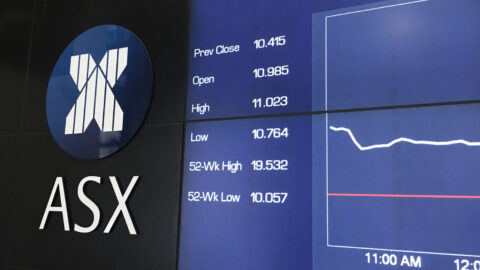Contents
- 1 Headline Growth Masks Underlying Divergence Based on April Flash PMIs
- 1.1 Insights from April Flash PMIs: Sectoral Divergence: Services Rise, Manufacturing Falters (Except US)
- 1.2 Future Outlook: Potential for Slower Growth Ahead Based on April Flash PMI data
- 1.3 Stalled Employment Raises Concerns
- 1.4 Inflation: Stubbornly High Service Sector Costs and Reviving Manufacturing Prices
The April Flash PMIs (Purchasing Managers’ Index) data painted a picture of an increasingly broad-based economic expansion across the four major developed economies – the United States (US), Eurozone, United Kingdom (UK), and Japan (often referred to as the G4). However, a closer look reveals a more nuanced story, with signs of improving growth in Europe and Japan contrasting with a slowdown in the US. The US also bucked a broader trend of rising employment, experiencing its first cut to jobs since the early months of the pandemic.
Headline Growth Masks Underlying Divergence Based on April Flash PMIs
The April Flash PMIs indicated economic growth across all four G4 economies, building on the renewed expansion witnessed in the first quarter. This marks a positive development, suggesting a potential broad-based upturn. However, the G4’s weighted average output index dipped slightly to 51.6 from 51.7 in March, hinting at a potential loss of momentum.
Digging deeper, we see significant regional variations. Growth in Japan surged to an eight-month high, while the Eurozone and UK reached 11-month highs. These figures suggest these economies are making further progress in recovering from recent periods of weakness. Conversely, US growth slowed to a four-month low, despite now expanding for 15 consecutive months. Notably, the UK has only seen six months of expansion, and upturns in the Eurozone and Japan are limited to just two and four months, respectively.

Insights from April Flash PMIs: Sectoral Divergence: Services Rise, Manufacturing Falters (Except US)
The April Flash PMIs also revealed interesting sectoral developments. While both US manufacturing and services slowed, both sectors still managed to expand. In contrast, the Eurozone, UK, and Japan saw notably stronger service sector performances compared to manufacturing downturns. This suggests that service-oriented businesses in these economies are driving growth, while manufacturing continues to struggle.

Future Outlook: Potential for Slower Growth Ahead Based on April Flash PMI data
Looking ahead, the G4 new orders index, a gauge of changes in demand for goods and services, dipped to 49.9 in April. This drop below the no-change mark of 50.0 for the first time since December indicates a potential loss of momentum across the G4 as a whole in May. Additionally, future output expectations slipped to a four-month low, suggesting a cautious outlook from businesses.
Stalled Employment Raises Concerns
The decline in new orders and business confidence seems to have translated into a stalling of the G4 employment situation. April marked the first month since August 2020 without any net job creation across the G4. However, regional variations persisted. The Eurozone, UK, and Japan witnessed stronger job gains, while the US experienced a significant drop in jobs, the first since the early pandemic months.
Inflation: Stubbornly High Service Sector Costs and Reviving Manufacturing Prices
From an inflation perspective, the April Flash PMIs highlighted the persistent issue of elevated service sector input cost and selling price inflation rates at the G4 level. Additionally, manufacturing costs and prices continued to rise, raising concerns about potential upward pressure on overall inflation in the coming months, even if service sector inflation cools.
The UK led the G4 in terms of the steepest growth in selling prices for goods and services, followed by Japan. However, the trajectory differed – UK selling price inflation cooled to a level not seen since February 2021, while Japan’s rate surged to a 12-month high. The US, on the other hand, saw a renewed decline in the rate of selling price inflation, reaching one of the lowest levels in the past four years. While the Eurozone saw a slight uptick, the rate remained below the past year’s average and the lowest among the G4.




Inflationary Pressures: A Tale of Four Economies
The composite PMI selling price index currently exceeds pre-pandemic ten-year averages by a significant margin in Japan (6.3 points) and to a lesser extent in the UK (3.7 points) and Eurozone (3.2 points). The US, however, exhibits a smaller deviation (1.7 points).
Comparing these indices with consumer price inflation rates suggests that inflation is likely running close to central bank targets of 2% in the US and Eurozone. However, the UK and, particularly, Japan, are likely exceeding their respective targets.
Conclusion
The April Flash PMIs offer a mixed picture of the G4 economies. While a broad-based expansion appears underway, the pace of growth varies considerably across regions. The US slowdown and stalling job market raise concerns, while Europe and Japan show signs of improvement. The inflation picture remains complex, with persistent service sector cost pressures and potential manufacturing price increases. As we move forward, factors like the ongoing war in Ukraine, potential further interest rate hikes by central banks, and fluctuations in global energy prices will all play a role in shaping the future trajectory of the G4 economies.
The April Flash PMIs provide valuable insights into current economic conditions, but they are forward-looking indicators with inherent limitations. Close monitoring of these and other economic data points will be crucial in understanding how the G4 economies navigate the complex challenges and opportunities that lie ahead.
also read: Tokyo Inflation at 1.6% In April 2024, Falls Below 2.2%








